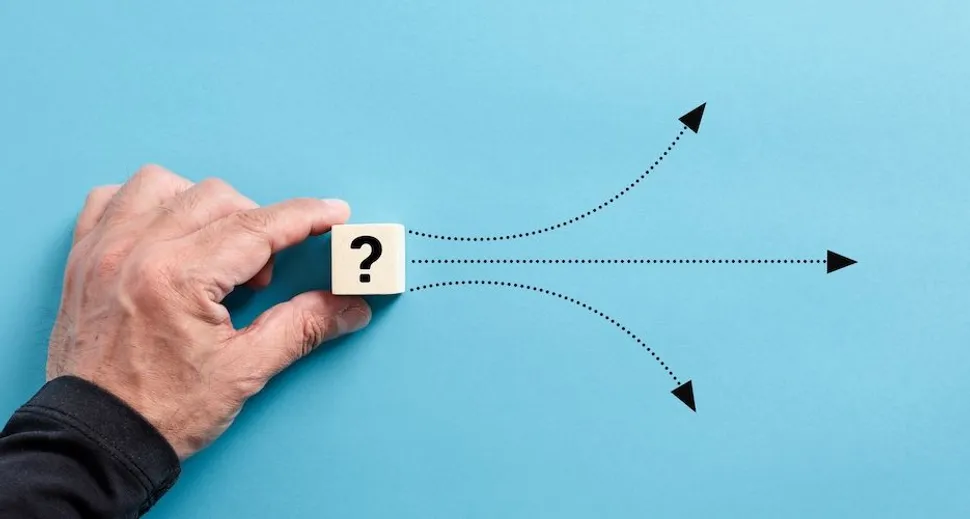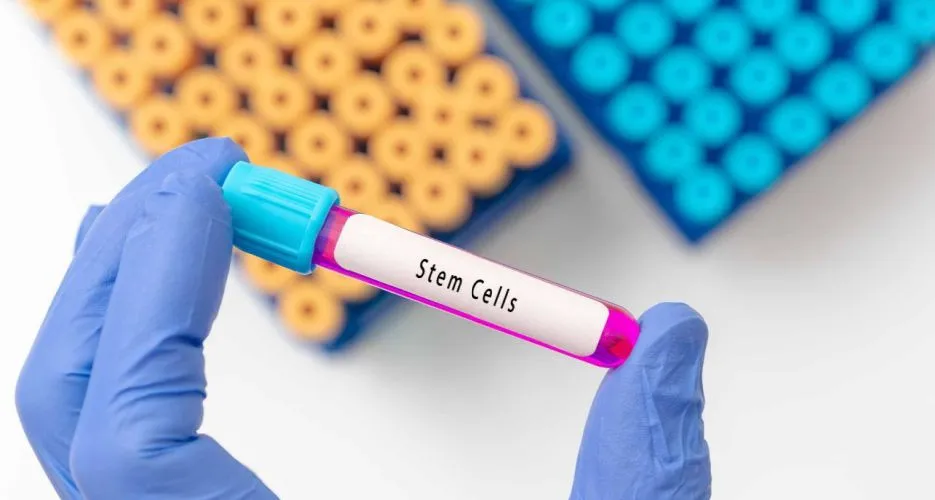What If Venetoclax Stops Working?

How does that happen, and what are my options?
Venetoclax-based regimens for chronic lymphocytic leukemia (CLL) frequently achieve deep remission, as evidenced by undetectable “measurable residual disease” in the peripheral blood and bone marrow.
Measurable residual disease (MRD) refers to a very small number of cancer cells that may remain in the body during or after treatment. Undetectable MRD is strongly associated with prolonged progression-free survival (PFS).
However, despite the efficacy of venetoclax-based therapy, recurrence of MRD and progressive disease are common after approximately 2 years. In particular, as fixed-duration venetoclax-based therapies are increasingly used, more patients will require additional CLL therapy after venetoclax.
All cancer treatments are subject to the rise of resistance mechanisms in the patient’s body. Resistance to chemotherapeutic agents and targeted drugs is a major problem in cancer treatment.
Mechanisms of Resistance to Venetoclax
Venetoclax (Venclexta, AbbVie) is a BCL-2 inhibitor (BCL-2 means B-cell leukemia/lymphoma 2 protein). The best-known mechanisms of venetoclax resistance are mutations of the BCL-2 protein and activation/increase of “pro-survival” proteins. These pro-survival entities help malignant B-cells resist death.
Multiple mutated forms of the BCL-2 gene contribute to drug resistance by reducing the BCL-2 protein's attraction to venetoclax. For example, the acquired mutation Gly101Val occurs at the venetoclax binding site on the BCL-2 protein, disrupting the medicine’s effects.
Pro-survival proteins such as MCL-1, a member of the BCL-2 family, can be manipulated by malignant cells —increased in quantity and stimulated to greater activity. The pro-survival proteins can replace and continue the function of BCL-2 while it is bound by venetoclax. This “substitution mechanism” can result in reduced efficacy or even failure of BCL-2-targeted drugs such as venetoclax.
A variety of other possible genetic mechanisms, including overall genomic instability, are under investigation. Note that current insights into venetoclax resistance are mostly derived from patients treated with continuous venetoclax monotherapy for relapsed/refractory CLL. It is not known whether the information also applies to patients receiving the combination therapy for a fixed duration.
What are the Treatment Options for CLL Patients Who Relapse After Venetoclax?
If you have progressive CLL after time-limited venetoclax combination therapy, your doctor will test for BCL-2 mutations. If a mutation is present, venetoclax re-treatment is not advisable. If a BCL-2 mutation is not present, but the duration of remission off venetoclax is less than 24 months, venetoclax re-treatment is also not favored. But if there are no BCL-2 mutations and remission lasted for longer than 24 months, venetoclax retreatment, perhaps with rituximab, is an option.
A Bruton tyrosine kinase (BTK) inhibitor is an option for patients with progressive disease on venetoclax monotherapy. If intolerance to ibrutinib was a problem, more selective BTK inhibitors such as acalabrutinib or zanubrutinib may be tried.
More recently, a small chart-review study of 46 patients who experienced relapse after initial response to venetoclax-based therapy demonstrated good results with venetoclax retreatment. After a median of 16 months between the end of the first venetoclax therapy period and the start of the second, almost 80% of patients responded to venetoclax retreatment. These results need to be further evaluated in more CLL patients who relapse after time-limited venetoclax combination therapy.
Watch our webinar with Dr. Kerry Rogers, a CLL specialist from the Ohio State University Comprehensive Cancer Center, to learn more about the available therapies and clinical trials for relapsed/refractory CLL.
WATCH WEBINAR: CLL Treatment Options After Venetoclax Relapse
Exciting Brainstorming is Currently Underway to Develop Better Treatments for Relapsed Follicular Lymphoma
Researchers are aware that the resistance mechanisms identified after continuous venetoclax monotherapy are likely to differ from those identified after time-limited venetoclax combination regimens. They are examining several signaling pathways that promote factors supporting CLL cells, such as the AKT (also known as protein kinase B) pathway, which plays a key role in cell migration, cell cycle regulation, cell death, metabolism, and other processes.
Researchers are also working to predict drug resistance by the expression levels of certain markers and by detecting gene mutations or variations of chromosome number.
Investigators continue to try new combinations of medicines. A broader strategy to address venetoclax resistance is to design multi-action drugs that simultaneously target and inhibit multiple proteins supportive of CLL cells.
Join the HealthTree community for CLL! Sign up for our newsletter to register for our upcoming patient webinars and stay up-to-date with the latest advancements in CLL treatment.
Sources:
- Mechanisms of venetoclax resistance and solutions (2022)
- Venetoclax retreatment of patients with chronic lymphocytic leukemia after a previous venetoclax-based regimen (2022)
- How I treat chronic lymphocytic leukemia after venetoclax (2021)
- Undetectable peripheral blood MRD should be the goal of venetoclax in CLL, but attainment plateaus after 24 months (2020)
- Stemming the tide of drug resistance in cancer (2020)
- Drug resistance and combating drug resistance in cancer (2019)
How does that happen, and what are my options?
Venetoclax-based regimens for chronic lymphocytic leukemia (CLL) frequently achieve deep remission, as evidenced by undetectable “measurable residual disease” in the peripheral blood and bone marrow.
Measurable residual disease (MRD) refers to a very small number of cancer cells that may remain in the body during or after treatment. Undetectable MRD is strongly associated with prolonged progression-free survival (PFS).
However, despite the efficacy of venetoclax-based therapy, recurrence of MRD and progressive disease are common after approximately 2 years. In particular, as fixed-duration venetoclax-based therapies are increasingly used, more patients will require additional CLL therapy after venetoclax.
All cancer treatments are subject to the rise of resistance mechanisms in the patient’s body. Resistance to chemotherapeutic agents and targeted drugs is a major problem in cancer treatment.
Mechanisms of Resistance to Venetoclax
Venetoclax (Venclexta, AbbVie) is a BCL-2 inhibitor (BCL-2 means B-cell leukemia/lymphoma 2 protein). The best-known mechanisms of venetoclax resistance are mutations of the BCL-2 protein and activation/increase of “pro-survival” proteins. These pro-survival entities help malignant B-cells resist death.
Multiple mutated forms of the BCL-2 gene contribute to drug resistance by reducing the BCL-2 protein's attraction to venetoclax. For example, the acquired mutation Gly101Val occurs at the venetoclax binding site on the BCL-2 protein, disrupting the medicine’s effects.
Pro-survival proteins such as MCL-1, a member of the BCL-2 family, can be manipulated by malignant cells —increased in quantity and stimulated to greater activity. The pro-survival proteins can replace and continue the function of BCL-2 while it is bound by venetoclax. This “substitution mechanism” can result in reduced efficacy or even failure of BCL-2-targeted drugs such as venetoclax.
A variety of other possible genetic mechanisms, including overall genomic instability, are under investigation. Note that current insights into venetoclax resistance are mostly derived from patients treated with continuous venetoclax monotherapy for relapsed/refractory CLL. It is not known whether the information also applies to patients receiving the combination therapy for a fixed duration.
What are the Treatment Options for CLL Patients Who Relapse After Venetoclax?
If you have progressive CLL after time-limited venetoclax combination therapy, your doctor will test for BCL-2 mutations. If a mutation is present, venetoclax re-treatment is not advisable. If a BCL-2 mutation is not present, but the duration of remission off venetoclax is less than 24 months, venetoclax re-treatment is also not favored. But if there are no BCL-2 mutations and remission lasted for longer than 24 months, venetoclax retreatment, perhaps with rituximab, is an option.
A Bruton tyrosine kinase (BTK) inhibitor is an option for patients with progressive disease on venetoclax monotherapy. If intolerance to ibrutinib was a problem, more selective BTK inhibitors such as acalabrutinib or zanubrutinib may be tried.
More recently, a small chart-review study of 46 patients who experienced relapse after initial response to venetoclax-based therapy demonstrated good results with venetoclax retreatment. After a median of 16 months between the end of the first venetoclax therapy period and the start of the second, almost 80% of patients responded to venetoclax retreatment. These results need to be further evaluated in more CLL patients who relapse after time-limited venetoclax combination therapy.
Watch our webinar with Dr. Kerry Rogers, a CLL specialist from the Ohio State University Comprehensive Cancer Center, to learn more about the available therapies and clinical trials for relapsed/refractory CLL.
WATCH WEBINAR: CLL Treatment Options After Venetoclax Relapse
Exciting Brainstorming is Currently Underway to Develop Better Treatments for Relapsed Follicular Lymphoma
Researchers are aware that the resistance mechanisms identified after continuous venetoclax monotherapy are likely to differ from those identified after time-limited venetoclax combination regimens. They are examining several signaling pathways that promote factors supporting CLL cells, such as the AKT (also known as protein kinase B) pathway, which plays a key role in cell migration, cell cycle regulation, cell death, metabolism, and other processes.
Researchers are also working to predict drug resistance by the expression levels of certain markers and by detecting gene mutations or variations of chromosome number.
Investigators continue to try new combinations of medicines. A broader strategy to address venetoclax resistance is to design multi-action drugs that simultaneously target and inhibit multiple proteins supportive of CLL cells.
Join the HealthTree community for CLL! Sign up for our newsletter to register for our upcoming patient webinars and stay up-to-date with the latest advancements in CLL treatment.
Sources:
- Mechanisms of venetoclax resistance and solutions (2022)
- Venetoclax retreatment of patients with chronic lymphocytic leukemia after a previous venetoclax-based regimen (2022)
- How I treat chronic lymphocytic leukemia after venetoclax (2021)
- Undetectable peripheral blood MRD should be the goal of venetoclax in CLL, but attainment plateaus after 24 months (2020)
- Stemming the tide of drug resistance in cancer (2020)
- Drug resistance and combating drug resistance in cancer (2019)
about the author
Jacqueline M. Mahon, MA
Jacqueline is delighted to be writing for HealthTree Foundation. She has extensive experience working in blood cancers as well as other oncologic and therapeutic areas. When not writing, she may be gardening, hiking, or playing with her rescue cat, Merlin.
More on Treatment Advances
Trending Articles

Get the Latest Chronic Lymphocytic Leukemia Updates, Delivered to You.
By subscribing to the HealthTree newsletter, you'll receive the latest research, treatment updates, and expert insights to help you navigate your health.
Together we care.
Together we cure.
3x Faster.










